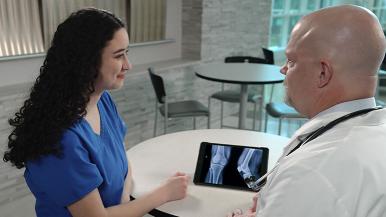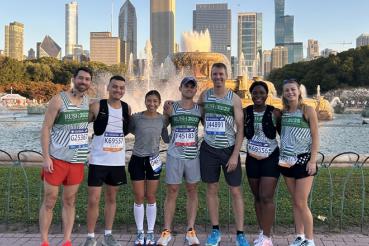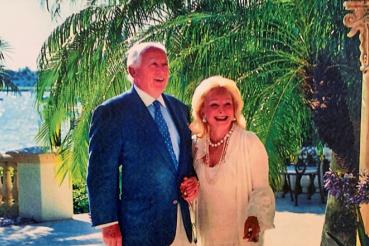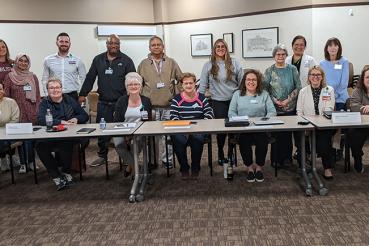When he was a teenager, Garrett Katula, DO, wanted to become a doctor. But he had no idea what specialty he wanted to pursue – or even all the choices that were available.
Now a primary care doctor specializing in family medicine with Rush Copley Medical Group in Yorkville, Katula is helping high school students in that position. He helped create the medical portion of the Field Experience Program at Yorkville High School, which gives high school seniors the chance to shadow professionals in fields like firefighting, architecture or health care.
A student might be interested in becoming a nurse or a doctor. This program allows a close-up view of the many specialties within the hospital and outpatient centers.
“We want to give students opportunities to see what everybody does in health care,” he says. “We want to help kids make good decisions.”
Volunteering as medical sponsor for the program, Katula first got involved in creating a health program at Yorkville High School when his daughter’s friend expressed an interest in health care. At that time, they started a Health Topics club, but it was not hands-on and not well-received.
Experiencing health care firsthand
Today’s field experience program has garnered a lot more interest. Starting out four years ago with seven students, the program grew to 26 students before taking a timeout because of the pandemic. It restarted this year and currently has 17 students.
The program introduces various health care roles to the students and allows them to experience health care firsthand. They participate in nine rotations, spending two to four hours a week observing direct patient care settings throughout the hospital and outpatient centers. Students shadow Rush Copley medical professionals in cardiac rehab, dialysis, the emergency department, the ICU, family practice and several other specialties. Although the experience is less hands-on now due to COVID-19 restrictions, in the past, students had the opportunity to take patients’ temperature or check their blood pressure.
“Students are in the ICU at Rush Copley Medical Center,” says high school sponsor Melissa Wojowski. “You can’t get more hands-on than that.”
Katula worked with Wojowski to design the program, and they provide more shadowing opportunities for the students every year.
“Dr. Katula is the reason this program exists,” Wojowski says. “He came up with the concept of rotations to get kids exposed to as many fields as possible. It was the best idea in the world!”
Providers enjoy giving back
It was important to Katula to design situations where the students could physically be there.
“We found spots and designed how they would look,” he says. He lines up providers from the medical center and physicians’ offices to participate, then connects them with Wojowski, who creates rotations that work for the medical center.
“Most providers are happy to be part of this,” Katula says. “Doctors like to give back.”
Each department has its own schedule and protocol. For example, the rotation in the ICU is scheduled from 9:30 to 11:30 a.m. when doctors round on the ICU patients. Only one student can shadow the ICU physician. The student learns what is going on in a patient’s room and then chooses whether to enter the room or watch from the doorway.
“Whether they enter the room or not, the student observes and has a conversation with the provider afterward about why and how decisions were made,” Wojowski says.
The program gives students the opportunity to process their experiences and make decisions about their goals. After participating in the rotations, one student no longer wanted to pursue a medical career.
“I consider that a victory,” Wojowski says. ”It’s great for a student to have that experience and make that decision before committing to years of medical school.“
Wojowski encourages the students to talk to the providers at each shadowing opportunity to learn where they went to school, what jobs they had and where they got their experience. The students can then make direct choices based on their conversations with medical staff.
“To me, that is priceless,” Wojowski says.
Katula agrees. “Choosing an undergraduate school, medical school and a residency program is a big commitment, especially when you’re only 16 or 17 years old,” he says.
Not like TV
The students are required to journal about their experience and have given great feedback. Students frequently say, “It’s not like what I see on TV.”
“Some students were absolutely taken with the emergency department,” Katula says. “Others — during their rotation in physical rehabilitation — got to see a person take their first steps. It was a very moving experience for them to witness and be part of.”
Another student was rounding with a resident when a code blue was called, signaling that a patient had a cardiac or respiratory arrest and needed resuscitation. As part of the response team, the resident ran through the hospital to assist, and the student ran with him.
“Students see patients who survive and some who don’t,” Wojowski says. “A lot of learning happens. The experience is eye-opening in so many ways. The students see so much. It helps tremendously with making decisions after high school.”
Satisfying to help students
Katula is still in touch with some past participants who have gone into the medical field. One — now a junior in college — recently shadowed Katula as part of a post-field experience.
Katula says it’s satisfying to help students better educate themselves on what is available for a medical career and what that journey will entail. Volunteering in these ways gives him a stronger sense of community.
An active member of his Yorkville community, Katula has also served on the school board for Yorkville, a position to which he was elected. He has also done his share of coaching youth athletic teams.
“I raised my family in this community,” he says. “My three children went to Yorkville High School. It keeps me involved in what goes on at the school and helps me be a better physician by being part of that community.”




